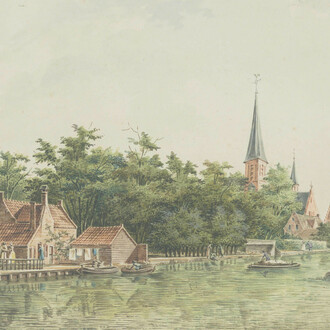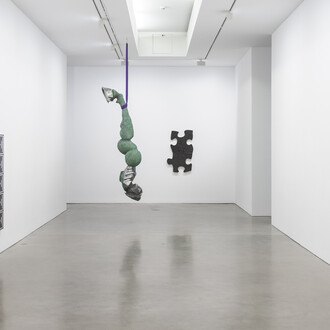The exhibition presents a selection of around 200 photographs from the estate of Stuttgart photographer Ludwig Windstosser (1921–1983), images preserved by the Kunstbibliothek (Library of Art) in the Museum für Fotografie (Museum of Photography). Through his company portraits Windstosser advanced to become post-war West Germany’s leading industrial photographer; yet he remains largely unknown today. The show is the first attempt to offer a comprehensive look at the life and work of the photographer, who until now has not been recognised with a solo exhibition.
In the years immediately after the Second World War, Windstosser was a member of the fotoforum group and participated in exhibitions and book projects concerned with subjektive fotografie (subjective photography). Revisiting trends seen in the photography of the 1920s and 1930s, it was fotoforum, in particular, that influenced the pictorial imagery of the German post-war avant-garde. Oblique perspectives, unusual image cropping, and pronounced tonal contrasts can also be found in the advertising photographs Windstosser took as an industrial photographer for many companies in fields ranging from steel production to pharmaceutical and textile manufacturing beginning in the 1950s. He portrayed, for example, the mining company Ruhrkohle AG, which played a crucial role in West Germany’s economic upswing. In his photographs he traced the production process from the mineshafts to the local furnaces, generating a portrait of mining that still survives in the collective memory.
Windstosser also used his camera to capture the post-war German zeitgeist in numerous illustrated book projects. The photo books reveal the outlooks of people in larger cities such as Berlin and Stuttgart while also presenting a wide variety of landscapes. In his 1972 book Berlin: Teils teils, he portrays Berlin at a time marked not only by reconstruction and progress, but also by a desire for normality and security. The skilful juxtaposition of images sustains the tension between these standpoints throughout the book of colour photographs.
The 80-page book accompanying the exhibition delves into Ludwig Windstosser’s artistic, industrial, and urban and nature photography, the three main aspects of his oeuvre. His career is exemplary of those of many photographers during the period of the West German economic miracle. Yet his work is unique in the versatility of its visual language.
















